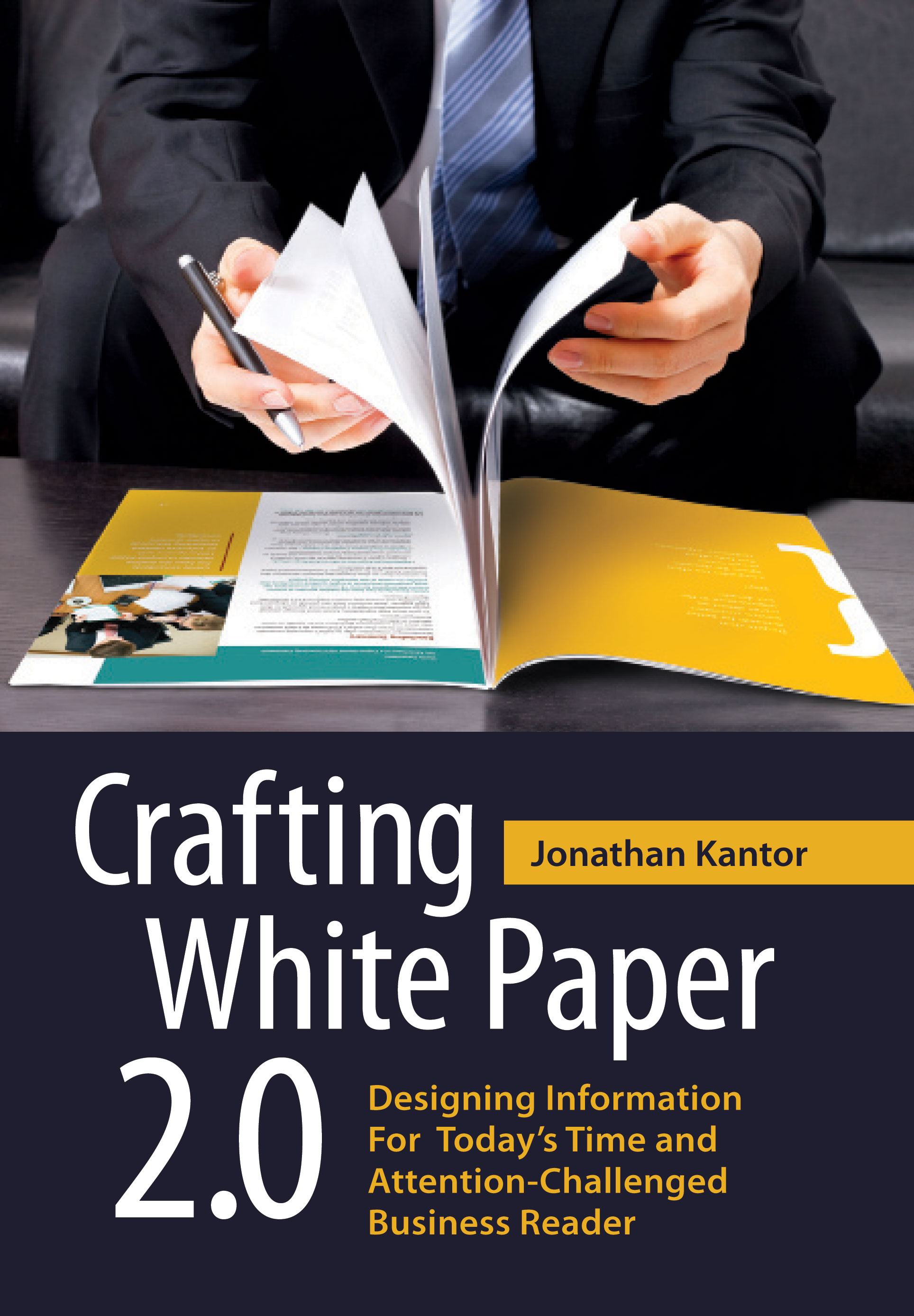
With white papers emerging as the go-to tool for many demand generation campaigns, Principal & Founder of The Appum Group Jonathan Kantor released a new book dedicated to providing marketers with best in class tactics for white paper composition. The new book, “Crafting White Paper 2.0,” offers marketers insights into best practices around visual elements as well as utilizing case studies to optimize readership and response.
“If business writers and marketers wish to elevate their skills on part with a craft, they will have to incorporate more visually engaging elements beyond simply placing words on a blank sheet of paper,” advises Kantor. DemandGen Report had the chance to catch up with Kantor to spotlight some of the key takeaways of his new book, including how to avoid common composition mistakes, as well as the best ways to optimize white paper promotion through social media.
 DemandGen Report: The book’s title “Crafting White Paper 2.0” stresses the importance of incorporating elements (other than words) to thrive in today’s competitive business environment. What are some of the other key elements for white papers that you stress in the book?
DemandGen Report: The book’s title “Crafting White Paper 2.0” stresses the importance of incorporating elements (other than words) to thrive in today’s competitive business environment. What are some of the other key elements for white papers that you stress in the book?
Jonathan Kantor: There are four categories of “visual” elements that engage today’s time-constrained business readers:
- Page Design creates important first impressions that generate incentives for the business reader to open the white paper and read the first page.
- Executive and Concluding Summaries provide bottom line solution messages that allow the reader to determine if the primary content will solve their critical business problems and be worth the investment of their valuable and limited reading time.
- Text Enhancements provide visual links to larger portions of related white paper content on the same page. Sidebar callouts, shaded text boxes, and bullets quickly engage readers with important bottom-line messages that lead them to expanded page content.
- Graphic Enhancements such as concept graphics, business charts, and workflow diagrams translate complex text information into simple pictures that quickly deliver bottom-line solution messages. Industry-specific illustrations build reader affinity.
DGR: Chapter 6 explores “Why the Traditional White Paper Won’t Work.” One of the reasons you give is that the responsibility of reading large white papers often gets pushed down into lower levels of the organizational chart, making the ability for the marketer to influence the key decision makers more difficult. What are some ways to ensure that a white paper gets in front of the most appropriate person?
Kantor: If the target reader is a C-level, executive-level decision maker, white paper marketers must include elements that accommodates their limited amount of time and attention. Here are the most common methods of attracting top-level decision makers to your white paper:
- A professional design that allows the white paper to stand out among a crowded field of ‘me-too’, all-text documents that is seen all too often.
- An executive summary that specifically addresses the executive’s concerns while providing clear solutions to solve those problems, from their perspective.
- A detailed concluding summary that provides first time ‘skim readers’ with essential ‘take away’ messages and reinforces measurable ‘call-to-action’ information (such as a web site, phone number or email address) for subsequent lead capture.
- Concept graphics that translates complex solution/benefit text-based information into simple, clear illustrations so that bottom line advantages to be quickly assimilated and understood. This is precisely what busy executives are seeking from white papers, but few marketers are providing.
DGR: The book offers many tips to make white paper content compelling, including using a title and hyperlinks, and referencing through social media. What are the most important aspects of social media to leverage when promoting and white paper and why?
Kantor: Some of the basic social media best practices include:
- Use the tag “White Paper: Title” to notify your followers that the enclosed URL link is a white paper.
- Always add a shortened URL link to each tweet or post to maximize the limited number of characters devoted to your white paper title and description.
- Your URL should either directly download the white paper or reference one landing page where the user can download it.
- Don’t force your social media follower to surf through several landing pages before they can download the white paper. After two landing pages, you will lose their attention and significantly decrease the likelihood that they will download your paper.
- When you post additional updates to promote your white paper, use different descriptions to break up repetition and minimize the impression of overt selling.
DGR: The book emphasizes the significance of case study examples in white papers, to “attract reader attention by increasing ready affinity and ‘connectivity.’” What are some of the ‘must have’ elements to include in a white paper case study?
Kantor: White paper marketers must view the case study as a condensed version of the white paper that is focused on a customer experience rather than the featured solution. In other words, assume the reader knows nothing and walk the reader through a step-by-step approach in telling their testimonial story. This includes:
- Background information on the company and their industry
- Their business problem or challenge they experienced prior to implementing the identified solution
- Why they choose the featured solution.
- The results the company gained after implementation in clear, simple terms that any reader can understand (such as productivity, profitability, lower costs, return on investments, etc.)
Jonathan Kantor is the principal and founder of The Appum Group, "The White Paper Company," an organization that specializes in the creation of professional business and technical white papers for enterprise-class businesses and the SMB (Small to Medium Business) marketplace. Click here to purchase "Crafting White Paper 2.0."

No comments:
Post a Comment